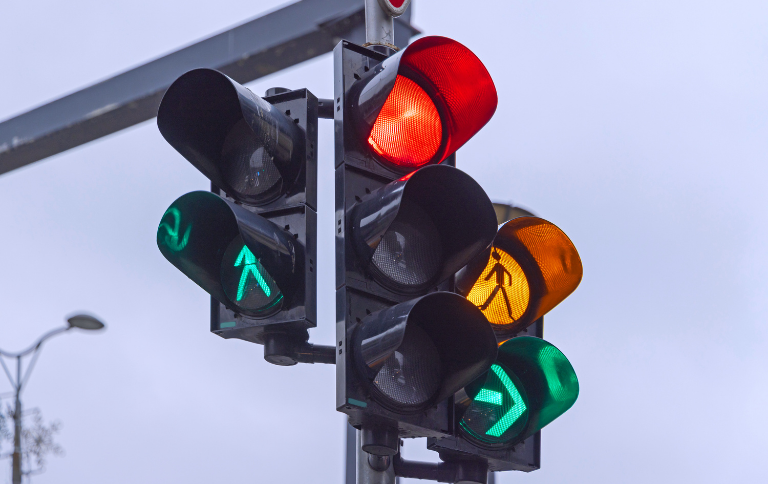
What Are Speed Cameras and How Do They Make Roads Safer?
September 2, 2025
How Speed Cameras Change Driver Behavior Over Time
September 3, 2025
Speed cameras have become a powerful tool in the fight to reduce dangerous driving. But despite decades of proven results, misconceptions still cloud the conversation. From myths about accuracy to claims of government overreach, misinformation often prevents communities from embracing automated enforcement solutions.
Separate fact from fiction and learn the most common questions people ask and what the data really shows.
Overview: Truths About Speed Cameras
(Click to Jump to Each)
|
Myth |
Truth |
| Speed cameras are just for revenue | Violations drop over time—programs focus on safety |
| Speed cameras violate due process | Citations include review rights and access to evidence |
| Speed cameras can’t be trusted | Calibrated and accurate within ±1 mph, with safeguards |
| Speeding isn’t really a problem | Caused 9,478 deaths in 2019 alone |
| Nobody supports speed cameras | 47% of U.S. drivers support them in residential areas |
| Speed cameras don’t actually work | Crash rates drop by up to 50% in many programs |
| Raising speed limits makes roads safer | Higher limits lead to more deaths, not fewer |
Myth 1: Speed Cameras Are Just for Revenue
Reality: The goal of automated speed enforcement is to increase traffic safety, reduce speeding, and save lives—not to generate tickets.
Numerous studies show that violations decline over time as driver behavior improves. In fact, well-run programs aim to issue fewer tickets, not more.
According to the National Highway Traffic Safety Administration, fixed speed cameras reduce injury crashes by 20–25%, and mobile speed cameras reduce injury crashes by 21–51%. That’s a public traffic safety outcome, not a money grab.
Myth 2: Speed Cameras Violate Due Process
Reality: Violations issued from speed cameras still follow legal procedures and allow for fair contestation.
As noted in Verra Mobility’s Speed Dangers resource, there is no presumption of guilt. Each citation includes access to the full evidence package and provides the registered vehicle owner with the opportunity to review and contest the violation.
In addition to providing access to evidence and the right to contest, citations are not issued automatically. While speed camera systems automatically detect and record potential violations, each event is carefully reviewed by trained personnel, typically within law enforcement, before a citation is issued.
This manual review process helps ensure that:
- The speed reading is accurate and within legal thresholds
- The license plate is clearly visible and correctly matched
- Questionable or borderline cases are filtered out
This added layer of oversight protects drivers from errors and reinforces the fairness and credibility of automated enforcement.
Myth 3: Speed Cameras Can’t Be Trusted—They Make Mistakes
Reality: Speed camera systems are highly accurate and strictly regulated.
According to federal guidelines, devices must be calibrated to within ±1 mph when properly installed. Many jurisdictions go further, setting a trigger threshold above the posted speed limit to avoid false readings.
Myth 4: Speeding Isn’t Really a Problem
Reality: Speeding is a major contributor to fatal crashes in the U.S.
In 2019 alone, 9,478 people were killed in speed-related crashes, accounting for 26% of all U.S. traffic fatalities. That’s more than 790 lives lost every month.
Speed cameras address a real and persistent public safety issue.
Myth 5: Drivers Don’t Support Speed Cameras
Reality: Nearly half of drivers do support automated enforcement—especially when used in residential areas.
A 2018 national survey found that 47% of U.S. drivers ages 16 and up support speed cameras on residential streets. Support often increases when programs are transparent and focused on safety, not punishment.
Myth 6: Speed Cameras Don’t Actually Work
Reality: Speed cameras consistently reduce speeding, crashes, and fatalities.
Research shows:
- All crashes decreased by 8–49%
- Injury crashes dropped by 8–50%
- Fatalities and serious injuries fell by 11–44%
in areas where speed cameras were introduced.
Programs in Arizona, Maryland, and D.C. saw speeding violations decline by 70% to 88% within six to eight months of launch.
Myth 7: Raising Speed Limits Makes Roads Safer
Reality: Higher limits often lead to higher speeds—and more fatalities.
An IIHS study found that raising speed limits over the past 25 years contributed to nearly 37,000 additional deaths. Drivers typically exceed the new limit once it increases, compounding the risk.
Learn More About Speed Safety Cameras
Get the facts on how automated speed enforcement works:
Ready to Separate Fact from Fiction in Your Community?
Verra Mobility helps cities implement speed camera programs that are transparent, legally sound, and focused on safety. From public outreach to technical accuracy, our solutions are built to inform and protect.
Contact us to learn more about launching an automated speed enforcement program in your community.

